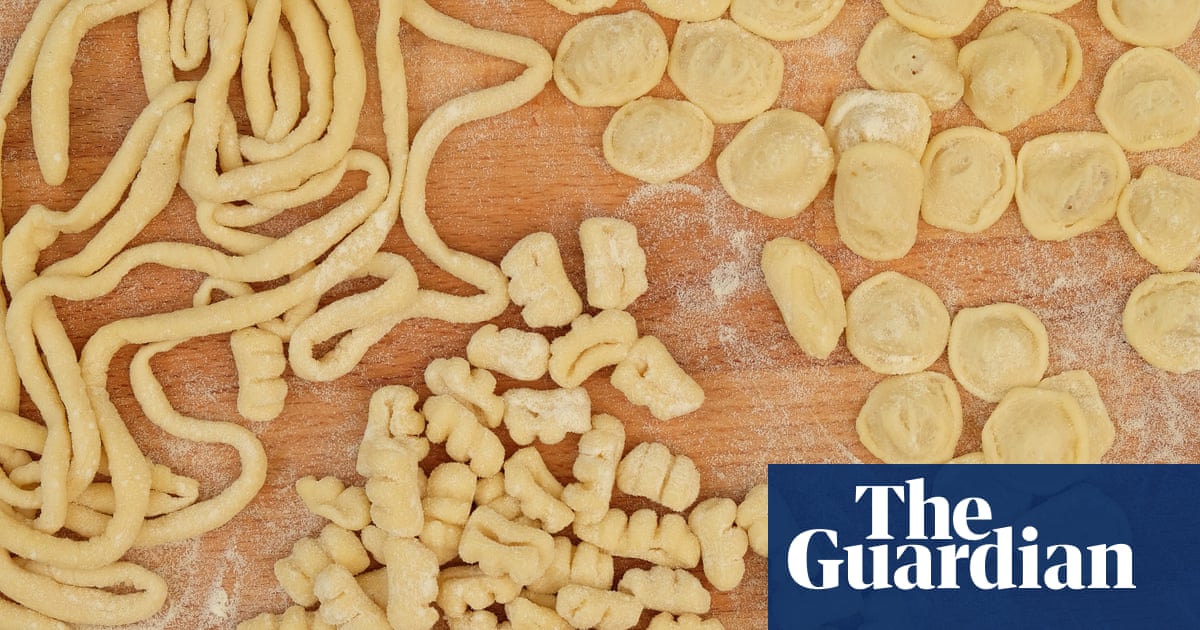
To the uninitiated, making pasta from scratch can appear more trouble than it’s worth. After all, why spend your hard-earned cash on a large, expensive, hyper-specialised pasta machine when you can buy a packet of dried supermarket spaghetti for $2?
And for those who want to have a crack, the internet has a trove of intimidating videos: masterful Italian cooks sculpting egg, flour and water into marvellous shapes, with a skill and dexterity passed down through the generations. But while the barriers to entry can feel insurmountable, they don’t need to be. The first pasta makers did not possess a Marcato.
“You can just do it so simply,” says Ellie Bouhadana, head chef at Melbourne’s Hope Street Radio. “It’s just flour, water and a wooden bench.”
Pre-pandemic, Bouhadana was working in an Italian kitchen and running pasta pop-up events around the city; during lockdown, she built a popular pasta delivery business. Despite her culinary successes, there is a caveat. “I would not say I’m a pasta expert at all. I make it because it’s fun and I’ve learned how I like to do it.
“I would never say it’s traditional.”
A Hope Street Radio co-owner, Pete Baxter, believes the extra time required to prepare pasta at home is worth the effort: “You’re never going to get the same kind of sauce attachment with store-bought pasta … Also, the texture is really chewy and unique.”
Sign up for the fun stuff with our rundown of must-reads, pop culture and tips for the weekend, every Saturday morning
For some entry-level tuition, Bouhadana has chosen three machine-free pasta shapes of progressing complexity: pici, a long pasta, followed by cavatelli and orecchiette. Some liberties have been taken to streamline the steps for beginners – for instance, using one simple dough recipe for all three shapes.
Consider these instructions as introductory encouragement rather than ham-fisted cultural perversion. We beg the forgiveness and understanding of expert nonnas and nonnos everywhere.
Making the pasta dough
With just flour and water, this is one of the simplest pasta doughs, and can be used for many hand-formed shapes. Some like to season their dough with salt but Bouhadana says salt crystals can tear the dough during shaping. She prefers to let heavily salted water season the pasta at the cooking stage.
Serves 4
400g semolina flour, plus extra for sprinkling
200g room-temperature water
Place the semolina flour on a floured benchtop or in a deep bowl, and form a well in the centre. Pour in the water. Gradually combine the flour and water to form a loose dough using your fingertips by starting from the middle then working outwards.
Knead dough firmly for 10 to 20 minutes until smooth. The more you knead, the more the gluten molecules will bond, resulting in bouncier pasta. Cover with a clean tea towel and set aside to rest for 30 minutes to one hour.
How to make pici
Originating in the Tuscan province of Siena, pici takes its name from “appiciare”, the process of rubbing the dough between your hands and fingers to form long irregular ropes. Traditionally, pici dough uses tipo 00 flour and often includes olive oil.
“Pici is the way to start,” says Bouhadana. The thick, textural noodles require minimal precision, and she prefers their uneven, handmade nature over spaghetti.
Says Baxter, a father of two: “It’s a good one for kids … It’s fun and you can’t really get it wrong.”
Instructions
Cut your rested dough into eight portions. On a floured bench, roll each piece on a bench into a stout log.
Hold down one end of the dough with one hand. With your other hand, roll the other end of the dough back and forth, towards and away from you, while also using pressure with the palm of your hand to pull the dough across the bench to form long ropes. Repeat with remaining dough portions.
Hold up a rope between your hands and rub it back and forth between your fingers. Each strand should be about 5mm thick (it will expand upon cooking). Repeat with remaining ropes. (For a smooth noodle, roll only on the bench until the desired thickness is reached.)
The pici is best cooked immediately. To cook the pici, boil in salted water for three to five minutes or until al dente (cooking times will vary depending on thickness). Drain and toss through your preferred sauce.
Serving suggestion: Cacio e pepe.
How to make cavatelli
Originating in southern Italy, cavatelli resembles oversized oats and is served with a variety of sauces, including a simple tomato sauce, or with seafood in coastal regions. In Molise, during the mid-January feast of Sant’Antonio Abate, cavatelli is eaten with pork ragu.
Traditionally, cavatelli are rolled along a ridged wooden board to form their grooves, but in keeping with the minimalist kitchen theme, Bouhadana suggests simply using the back of a regular fork. During your first attempt at making cavatelli, it’s wise to aim for quantity over quality or you’ll be having a late dinner.
“You can really make it any size you want. I just prefer tiny ones … you want to have that little pocket in the middle that the sauce can seep into,” Bouhadana says. “I want to eat pasta with grooves with a bolognese or sausage ragu, because that’s going to stick and get all texturally delicious.”
Instructions
Similarly to the pici recipe, divide the dough into eight portions, and roll along a floured bench to form long ropes.
Hold up a rope between your hands and rub it back and forth between your fingers. Each strand should be about 1cm thick. Repeat with remaining ropes.
Cut the dough strands into 1cm squares.
Applying medium pressure, use your thumb to roll a piece of dough along the back of fork and away from you, until it curls over the back of your thumb and off the fork. Repeat with remaining dough.
The cavatelli is best cooked immediately. Boil in salted water for three to five minutes or until al dente. Drain and toss through your preferred sauce.
Serving suggestion: Sausage ragu.
How to make orecchiette
After you’ve mastered cavatelli, it’s time for orecchiette, a shape from Puglia. Here though, we add an extra step by opening up the curl at the end to form “little ears” – which is what “orecchiette” means.
“The first few that you make will often look a bit weird. You’re gonna make a couple of hundred, so you’re going to get better,” says Baxter. “You want the dough to stick to the rolling surface a tiny bit for texture, to help the sauce stick to the pasta.”
Instructions
Follow the cavatelli recipe until step three. You should have 1cm squares of pasta dough.
To shape the orecchiette, take a piece of dough. Place the tip of a butter knife on the side of dough closest to you. With the knife blade parallel to the bench, push down and away as firmly as you can without breaking the dough. The dough should curl up and around the back of the knife.
Place your thumb or forefinger on the convex side of the dough. Fold back the edges of the dough to form an orecchietta. Repeat with the remaining dough.
The orecchiette is best cooked immediately. Boil in salted water for three to five minutes or until al dente. Drain, and toss through your preferred sauce.
Serving suggestion: Cime di rapa, bitter green leaves, or broccoli rabe; with garlic, chilli, anchovies, olive oil and breadcrumbs.












